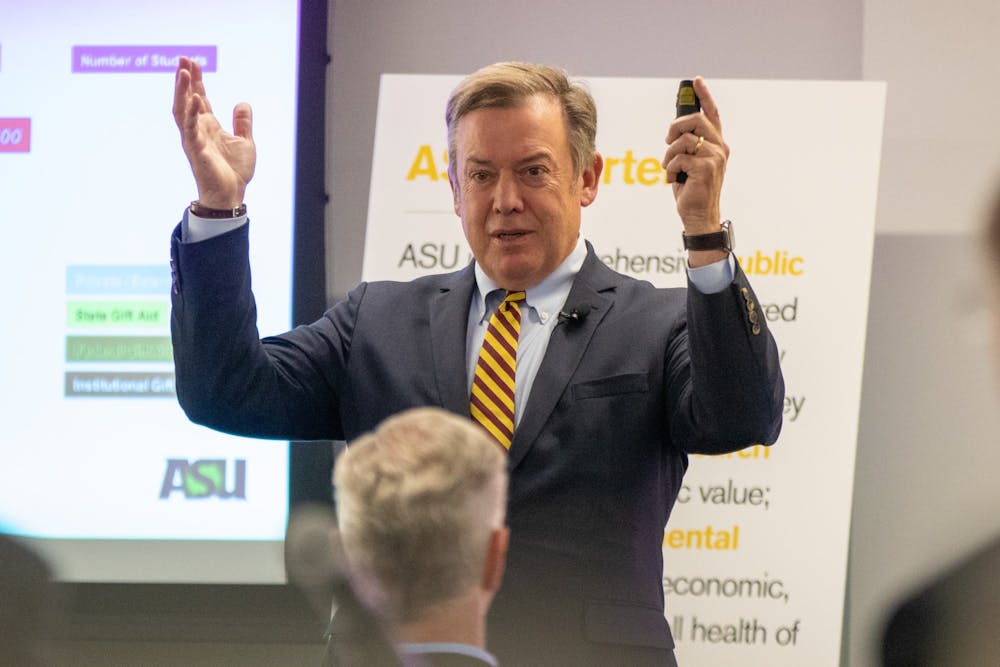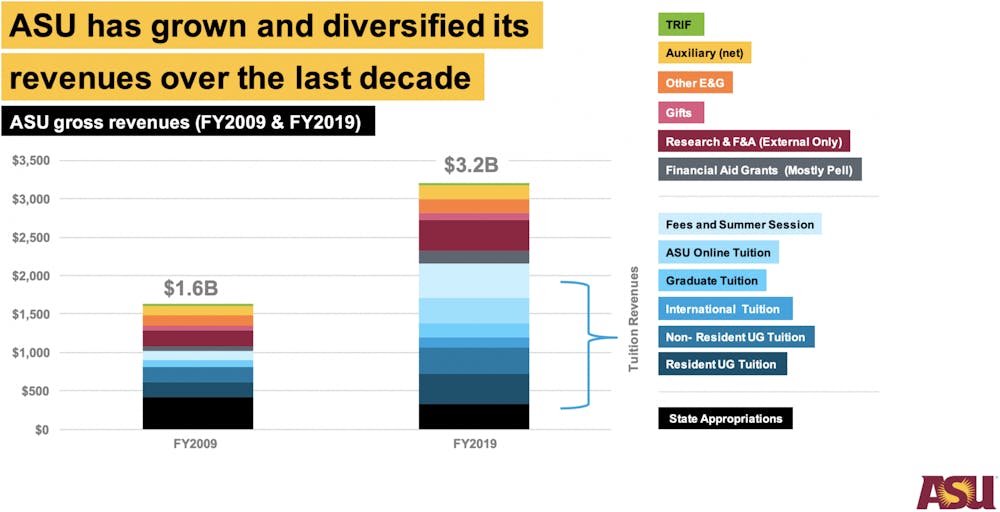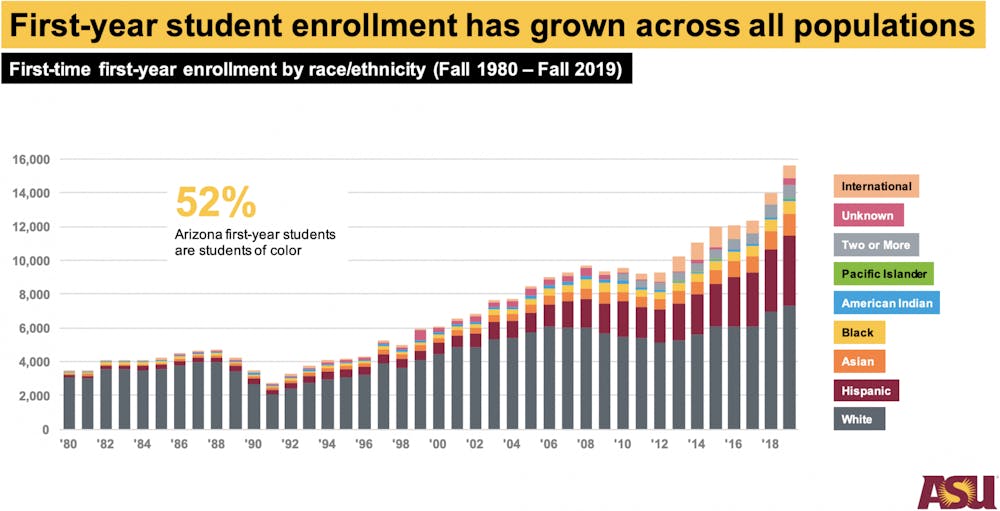The Arizona Board of Regents met to discuss and vote on several items that Arizona public universities have requested funding for, including overcoming student financial barriers, a large investment in ASU's capital development plan and a study on student-athlete image and likeness.
The meetings were held over a two-day session on Thursday and Friday on ASU's Tempe campus.
ASU's capital development plan
ABOR approved a $71.2 million capital development plan that includes infrastructure improvements and modifications, classroom and academic renovations, research laboratories and a parking structure expansion at Novus Place.
The approved funds come with academic success goals for 2025, including increasing student enrollment to 125,000 and the freshmen retention rate to 90%.
The fall enrollment for 2018 was 72,709 across ASU's four campuses, not including online students and freshman retention rate was 86.7%.
Crow said that ASU online was a large part of meeting these goals.
"We think that (the number of enrolled students) is too small," Crow said. "We are 60% of the way there already."
As ASU expands, it has also diversified the way it is able to generate revenue in order to fund its program investments, improvements and expansion.
"We are now operating as an enterprise, we’re not relying on our resources coming from an outside entity to have to go after each dollar individually," said Maria Anguiano, senior vice president for strategy at ASU.
Crow: The importance behind ASU investing in students
ASU President Michael Crow's presentation on ASU operations focused on the progress of the egalitarian mission of the University and how the University determines this mission's success.
Crow began with a commitment to ASU's inclusivity for qualified applicants in the state.
"If you are from Arizona and you’re qualified, you are admitted," Crow said.
Crow said that by increasing funding toward financial aid, the University has seen an increase in diversity among the student body population. He added that ASU's student body is now representative of the ethnic diversity of the state, an achievement that the University didn’t use ethnic diversity goals to attain.
"Once we eliminated financial barriers, all of the ethnic diversity of the state shows up," Crow said.
ASU Senior Vice President James Rund noted that many students without the means to attend the University deserved to have the opportunity to enroll.
"There are smart kids everywhere, but they don’t all have equal access to opportunity because of the asset disparity," Rund said.
Arizona has decreased funding to schools over the years, which leaves the universities to find other ways to provide financial aid.
In 2008, the state funded about 72% "of the cost to educate a resident student," but currently only funds about 34%.
"There's been this obsessive focus by the regents on tuition," Crow said. "We said we would make the tuition work, we would make the University accessible. We gather the resources from those that purchase the service, and we help those that can't afford to purchase the service."
Student-athlete image and likeness
ABOR approved a workgroup to look into issues surrounding student-athlete names and likeness. The issue of amateurism started to gain momentum since the California bill allowing student-athletes to profit from the use of their name and likeness.
In the request for approval, ABOR said that "because our student-athletes are nationally competitive, state and national coordination and alignment on these issues will be essential."
READ MORE: Shutting Pandora's box: The future of amateurism and recruiting at ASU
California's bill allowing student-athletes to be compensated for using their image and likeness is the first legislation of its kind in the U.S. The bill does not take effect until Jan. 1, 2023, and the NCAA has asked the divisions to create rules surrounding the issue by January 2021.
NAU students protest
Before the ABOR meeting on Thursday, NAU students protested outside Hayden Library, citing their grievances with NAU President Rita Cheng’s continued employment.
Cheng has recently been under scrutiny after a state audit found that she had failed to properly document travel expenses and was subsequently reimbursed by NAU.
Calli Jones, president of NAU Young Democrats and a junior studying political science and criminology, participated in the protest and voiced grievances from a coalition of several student groups against Cheng.
"Critical services have been cut," Jones said. "We don't even have a pharmacy on campus anymore. The lack of mental health services on campus is horrendous and it has created a crisis on campus."
ABOR did not comment on the matter in the public setting, and it is unclear what the board intends to do about the student coalitions request for the NAU president to step down.
"We have continually said we will not meet behind closed doors. We are calling for a public forum with students and community members," Jones said.
Reach the reporter at deharker@asu.edu and follow @HarkerZeke on Twitter.
Like The State Press on Facebook and follow @statepress on Twitter.






